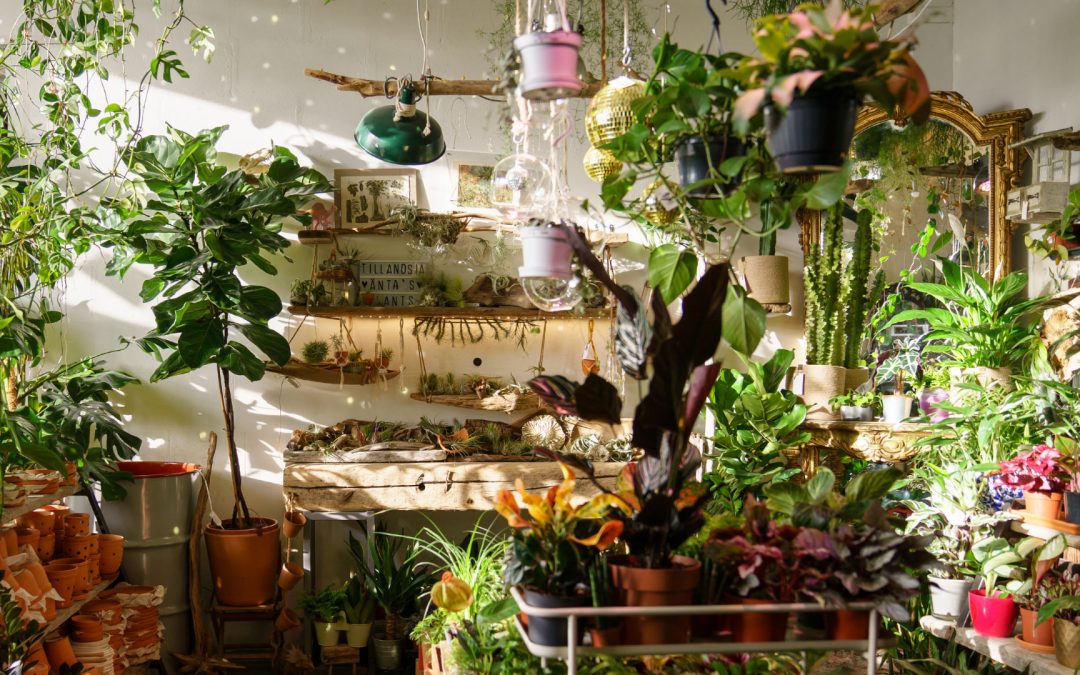Indoor gardening can be a delightful hobby, but it comes with its own set of challenges, especially when it comes to lighting. Not all areas of a home receive ample sunlight. Understanding and selecting the right plants for these low-light conditions and consulting professional plant services is crucial for a thriving indoor garden.
This blog delves into the nature of low light conditions, the unique adaptations of low light vine plants, and how you can successfully incorporate these resilient greeneries into your interior planting design.
Understanding Low Light Vine Plants
Low light vine plants are varieties that can thrive in less than optimal light conditions. These plants typically have a high tolerance for low light due to their native growth under forest canopies, such as tropical rainforests or in other shaded natural environments. Their adaptability often involves physiological adaptations such as larger leaves, which allow them to absorb more light under dim conditions, making them the ideal plants for the indoors.
Importance of Choosing the Right Plants for Dimly Lit Areas
Selecting the perfect low-light indoor plant is not just about ensuring plant survival; it also enhances the indoor environment. Some plants, like the golden pothos or philodendrons, not only tolerate low light but also purify the air, making them double as functional décor. In contrast, plants that require bright or medium light suited for low light could struggle and become susceptible to issues like root rot or pests due to overwatering and insufficient light.
Leveraging expert plant services for your interior planting design can greatly improve the selection process, ensuring that each plant not only survives but thrives in your specific indoor conditions.
Benefits Of Having Low Light Vine Plants Indoors
Air Purification Properties Of Vine Plants
Low light vine plants are not just decorative, they are also functional in purifying indoor air. Spider plants, for example, are known for their ability to remove common toxins such as formaldehyde from the air, making them an excellent choice for healthier indoor environments. Golden pothos, another robust air purifier, is effective against pollutants like benzene, formaldehyde, and xylene. These plants act as natural air filters, absorbing toxins through their leaves and roots.
Aesthetic Benefits Of Adding Greenery To Indoor Spaces
Incorporating low light vine plants into your interior planting design can greatly enhance aesthetic appeal. These plants add a touch of nature’s tranquility and a visual softness to rooms. The cascading vines of plants like golden pothos or the elegant drapery of spider plants can complement any decor style, from modern minimalist to rustic. Moreover, the presence of greenery in living areas has been linked to reduced stress levels and improved mood.
Popular Low Light Vine Plants
Choosing the right low-light indoor plants and the correct soil mix with occasional fertilization can also contribute to the overall health and growth of low light vine plants.
Some popular low light vine plants include:
Snake Plants
Known for their hardiness, snake plants are ideal for low lighting conditions. They have stiff, upright leaves that can tolerate neglect, making them a resilient plant, perfect for beginners. Snake plants are also known for improving indoor air quality by filtering out toxins such as benzene, formaldehyde, and trichloroethylene, particularly beneficial in bedrooms where they release oxygen at night.
Spider Plants
Spider plants are exceptionally adaptable and easy to care for, thriving in a range of light conditions, from bright to moderate indirect and artificial light. They are particularly known for their ability to purify the air by removing toxins like formaldehyde. Spider plants also produce offsets, or ‘spiderettes’, which can easily be propagated, making them a fun plant for multiplying and sharing.
Golden Pothos
Golden pothos are famous for their lush, trailing vines that can grow in a variety of directions—down from a hanging basket, across a shelf, or up a trellis. They thrive in shady conditions and have significant air-purifying qualities, effective against several indoor pollutants. This plant is also very forgiving and can grow long, with lush green foliage with minimal care, making it ideal for busy or novice plant owners.
Philodendron
Philodendrons are versatile plants that prefer low-light conditions and are easy to maintain. Their ability to adapt to lower light makes them suitable for indoor environments where other plants that require direct sunlight might struggle. They are particularly effective at absorbing xylene from the air. With their wide, attractive green leaves, philodendrons are beautiful plants and add a substantial visual impact to indoor spaces.
Heartleaf Philodendron
The heartleaf philodendron, a subtype of the broader philodendron family, is known for its durable and attractive heart-shaped leaves. It thrives in low-light conditions and can also purify the air. This plant is particularly easy to care for, needing only moderate watering and indirect light to flourish.
Additional Low Light Vine Plant Recommendations
String of Pearls (Senecio rowleyanus)
The String of Pearls plant is a unique and eye-catching succulent that thrives without bright or direct light. It is highly drought-tolerant, making it ideal for environments where watering can be infrequent. The plant features small, round, bead-like leaves that drape beautifully over the edges of containers, making it perfect for hanging baskets. It’s important to use well-draining soil and to ensure the plant is not overwatered to avoid root rot.
Jasmine
Jasmine is a popular houseplant, renowned not only for its beautiful and delicate white flowers but also for its delightful fragrance, which can add a fresh scent to any indoor space. It adapts well to low light conditions, though it will produce fewer flowers in less light. Jasmine plants can bring a touch of the exotic to your indoor garden, and they are low-maintenance plants, needing only moderate watering and some support to climb.
Maiden Hair Vine (Muehlenbeckia complexa)
Maiden Hair Vine prefers bright, indirect light but will tolerate lower light levels. It requires regular pruning to maintain its shape and promote denser growth. This vine is known for its wiry, interlocking stems and small, round leaves, making it an excellent choice for adding texture and greenery to your indoor space. Ensuring it is in well-draining soil and not overwatered will keep it healthy and thriving.
Tips For Growing Low Light Vine Plants Successfully
- Proper Watering Techniques: Watering correctly is crucial for the health of low light vine plants. These plants generally require less water due to the reduced light and therefore are slow-growing plants. Allow the soil to dry out slightly between waterings, and ensure pots have good drainage to prevent overly moist soil with water from sitting at the roots, which can lead to root rot.
- Soil Considerations: Use a well-draining potting mix, ideally one suited for the specific type of plant. For succulents like the String of Pearls, a mix designed for cacti and succulents, which typically includes components like perlite or sand, is ideal. This helps prevent water retention and mimics their natural growing conditions
- Optimal Placement Within Indoor Spaces: Choosing the right location within your home can greatly affect the growth and health of your vine plants. Even low light plants need some light source, so place them in areas where they can receive indirect sunlight, such as near a north-facing window or a few feet away from a brighter window. Avoid deep, dim corners where no natural light reaches.
Transform Your Indoors With Low Light Vine Plants With Mr. PlantSoCal
Low light vine plants are not just a practical choice for low light environments but also a delightful addition to enhance your interior planting design with their lush, trailing greenery. By understanding the specific needs of these plants, such as proper watering, suitable soil conditions, and optimal placement, you can easily integrate them into your home. These plants not only adapt well to low light conditions and shady spots but also contribute to purifying the air, proving that even the shadiest corners of your home can be transformed into vibrant, green retreats.
Ready to transform your home into a lush paradise, even in low light? Visit Mr. Plant SoCal today and explore our extensive plant services and collection of low light vine plants, perfect for enhancing any space.


